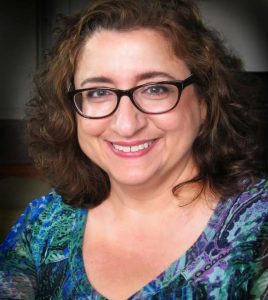 By Mary Catherine George, PhD
By Mary Catherine George, PhD
The eternal question my family and friends ask me is, “Why are you involved in scientific research for pain treatments?” My first career was as a professional opera singer. My journey into scientific research was accidental. I loved singing, yet suddenly, I had no job with the opera company that hired me. My brother worked at St. Vincent’s Hospital in “the Village” in New York City; he suggested I talk to the doctor he was working with because they needed help in their research program. I needed a job, so the doctor showed me a file drawer full of paper. It didn’t seem scary, so I said yes. Little did I know my experience working in research during the HIV/AIDS epidemic would teach me a profound lesson – the power of research. I witnessed so many people diagnosed with HIV/AIDS, with limited choices or prospects for survival, they would show up for the few research studies available. All with the hope for a possible treatment.
 Dr. George as the Countess in the Marriage of Figaro
Dr. George as the Countess in the Marriage of Figaro
Thankfully, HIV/AIDS is no longer a death sentence; because of successful research studies, treatments were developed and continue to be developed. Eventually, I transitioned my work to the Mount Sinai Health System. I became curious about how individuals who suffer with chronic pain can have the same medical problem but have a different pain experience. Every patient had a unique view of how they experienced their pain. Pain is a complex condition, and many factors, such as environment, culture, disease, personality, and life experiences, can influence how each of us experience pain. I decided to return to school and get a doctoral degree in Health Psychology because I wanted to help understand more about the elements that play a role in how we experience pain and well-being.
I am now in the process of working to develop a technological treatment for chronic pain. I am still at the beginning, yet engaging in research offers an opportunity to learn, discover, and advance what we know. It is how to help all those who suffer daily from chronic pain. Research can often be complex because we must show how something works and demonstrate safety, which means working closely with research participants doing a lot of tests during several study visits. Many patients would prefer not to participate in a research project, because the drug or device is not approved by the Food and Drug Administration (FDA). Yet, sometimes the opportunity to understand how we experience our health and pain can come from a different, unexpected direction. That is what research has taught me.
Living with chronic pain can often feel as if we are under a magnifying glass because the feelings of discomfort are so oversized. Exploring or seeing or thinking about chronic pain from a unique new perspective can change that experience. During recovery from my hip replacement, I used a brief mindfulness technique that I was taught in a research study. The idea of exploration outside of what I previously knew helped my health and well-being.
Curiosity can be a viewpoint that offers new insights into our human experience. Pain is something we all experience as humans. Is it any wonder it sparks my curiosity? Finding better treatments and offering ways to reduce pain can help so many people. No matter how difficult it is to make new treatments, scientific researchers are inspired to continue working hard to find medicines that will help. I am excited that I am part of this group of researchers. We cannot do this alone. We can only develop new therapies as a community. I know the important lesson I learned was persistence, because what I witnessed in the early part of my research career taught me to keep trying. The heart of research for me is being surrounded by a team whose members all want to improve the lives of those who suffer with chronic pain.

